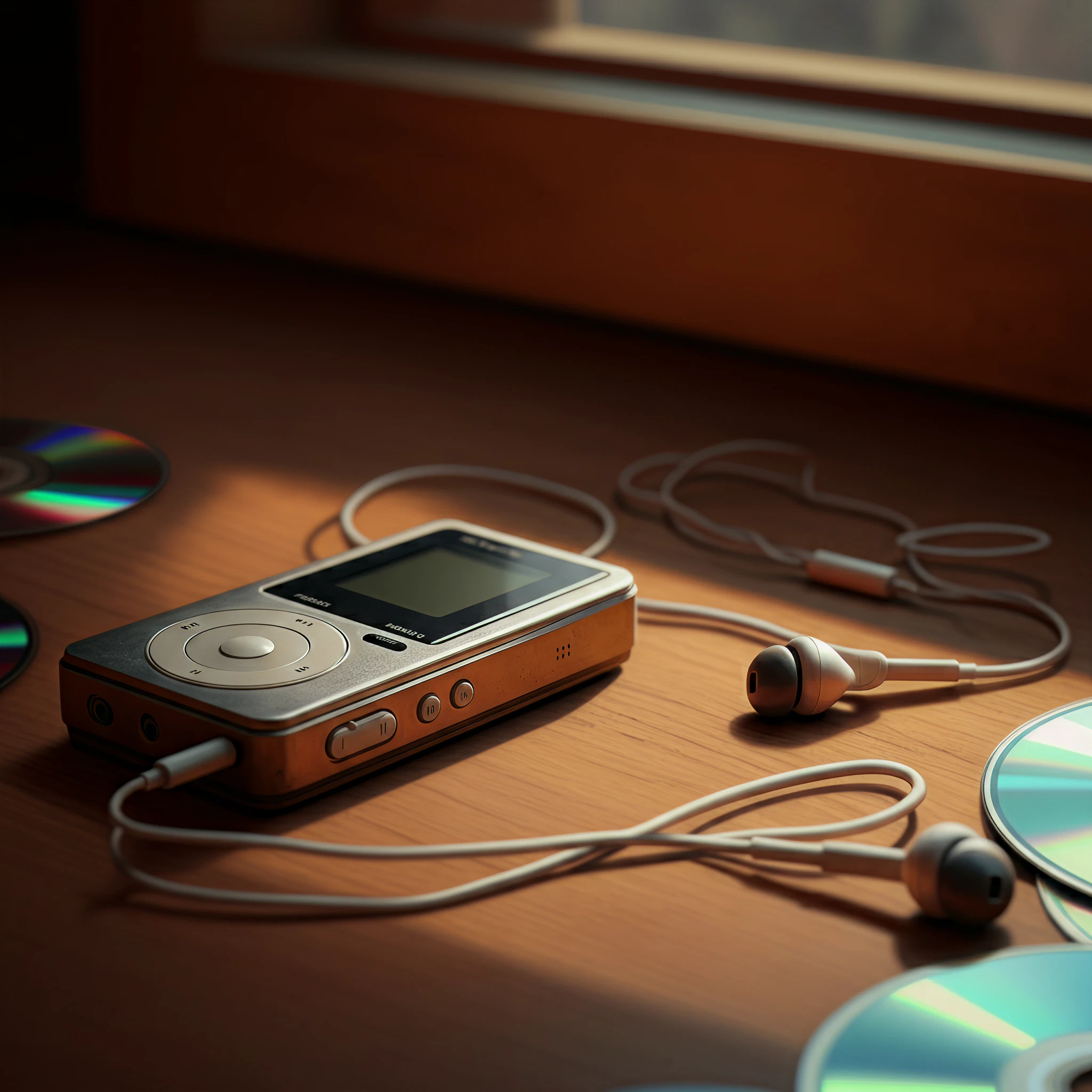Once upon a time, before smartphones became our constant companions, there were MP3 players. These portable devices didn’t just redefine how we consumed music; they kickstarted an entirely new era of personalization, mobility, and digital convenience. For tech enthusiasts and retro tech fans, old MP3 players are more than relics of the past—they’re iconic symbols of innovation that shaped the way we experience music today.
Join us as we explore the evolution, cultural impact, and enduring charm of these pocket-sized marvels.
The Evolution of MP3 Players
The first commercial MP3 player, the MPMan F10, debuted in 1998, a minimalist device with only 32MB of storage (enough to hold a handful of songs). Soon after, the Diamond Rio PMP300 hit the scene, offering a revolutionary take on portable music. These early devices paved the way for innovations like Apple’s iPod, Creative Nomad Jukebox, and other sleek, high-capacity players that followed. For nearly a decade, MP3 players evolved from bulky, utilitarian gadgets to sleek, highly portable tools that could fit thousands of songs in your pocket.
The introduction of larger hard drives, flash memory, and eventually touch screens made MP3 players faster, more user-friendly, and capable of holding extensive music collections. By the mid-2000s, devices like the iPod Classic and Zune had fully captured the imagination of music lovers.
Cultural Impact and Nostalgia
Owning an MP3 player wasn’t just about music. It was a statement. Carrying around thousands of songs in a single device gave you the ability to control your music experience as never before. It marked the beginning of minimalism in music consumption, where people no longer needed CDs, bulky boomboxes, or cassette tapes.
For those who grew up in this era, MP3 players evoke memories of curating custom playlists, discovering lesser-known artists, and painstakingly downloading tracks over slow internet connections. MP3 players weren’t just devices; they were companions for commutes, workouts, and countless other moments.
Technical Features That Defined Early MP3 Players
Old MP3 players might pale in comparison to smartphones in raw power, but their simple designs featured cutting-edge technology for the time. Here’s what defined them:
- Limited Storage: Early players like the Diamond Rio PMP300 could hold around 30 minutes of music, while later models stored thousands of songs.
- Innovative Connectivity: Older MP3 players used things like parallel ports before transitioning to USB, making file transfers a genuine project.
- Unique Interfaces: Many players featured physical buttons and small LCD screens, creating a tactile experience that tech fans still appreciate.
- Battery-Powered Freedom: Most ran on AA or AAA batteries, ensuring that you didn’t have to worry about wall charging.
From MP3 Players to Smartphones
The arrival of smartphones, starting with the iPhone in 2007, marked the beginning of the end for MP3 players. Smartphones bundled music playback with a wealth of other features, such as web browsing, gaming, and messaging. With the rise of streaming platforms like Spotify and Apple Music, digital downloads began to decline, and the need for dedicated MP3 players gradually faded.
Yet, this transition was bittersweet for many. Smartphones brought unparalleled convenience but lacked the focused simplicity and charm of standalone MP3 players.
Collecting and Restoring Vintage MP3 Players
Today, vintage MP3 players are making a comeback among retro tech and nostalgia enthusiasts. Devices like the iPod Classic, Creative Nomad, and even obscure models like the Archos Jukebox are highly sought after on resale platforms. Restoring these devices, whether by replacing batteries or upgrading storage, has become a niche hobby for many.
For collectors, these devices are more than curiosities—they’re pieces of tech history. From their quirky designs to their early attempts at enhancing the user experience, old MP3 players remind us of how far digital music has come.
Iconic Designs and Aesthetics
Many iconic MP3 players featured bold colors, translucent casings, and unique shapes that stood out from today’s uniform, minimalist designs. The Diamond Rio PMP300, for example, embodied a playful, toy-like aesthetic that still appeals to collectors today.
Apple’s iPod series took a different route, offering sleek, polished designs that became cultural icons. Devices like the iPod Mini and iPod Nano were celebrated as much for their form as their function, making tech an accessory of personal style.
User Experience and Interface
Old MP3 players had their own charm when it came to navigation. Physical buttons, scroll wheels, and clicky interfaces offered a tactile satisfaction that’s largely absent in today’s touchscreen-dominated devices. While they lacked the seamless connectivity and app integrations of modern devices, these MP3 players excelled in their simplicity and intentionality.
Where to Find Old MP3 Players Today?
For those who want to relive the era of MP3 players, online marketplaces like eBay, Craigslist, or specialized vintage tech shops are great places to begin your search. Many hobbyists also provide repair guides and replacement parts, making it easier to breathe new life into these nostalgic devices.
A Final Note on Old MP3 Players
Old MP3 players remind us of a simpler time when music wasn’t just background noise but an experience to savor. Despite today’s advanced technology, these devices continue to evoke a love for music and an appreciation for thoughtful design.
Whether you grew up curating playlists on a Creative Nomad or just want to experience the nostalgia of an iPod Classic, MP3 players hold a special place in tech history.
Share Your Memories!
What’s your favorite memory of an old MP3 player? Share your stories in the comments below!








